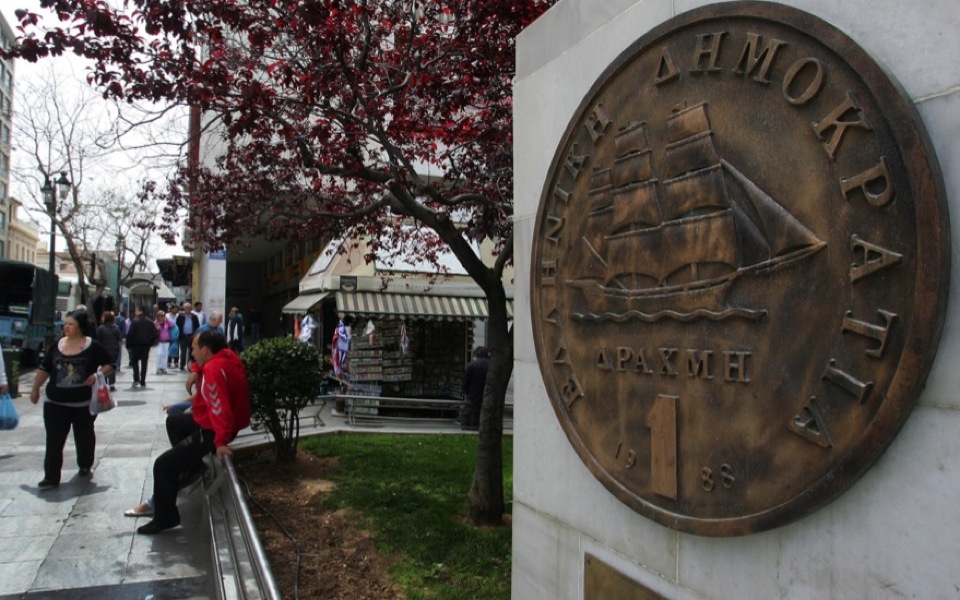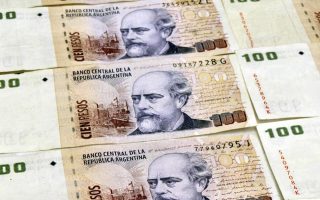How 340.75 drachmas became 1 euro

It was Saturday, March 14, 1998, when Theodoros Pangalos traveled to Edinburgh for an informal council of European Union foreign ministers. The top item on the agenda was negotiations for the accession into the bloc of 11 new candidate states, including Cyprus. Before he entered the meeting, Greek correspondents asked Pangalos whether Athens would resist pressure to link Cyprus’s EU accession to the progress of reunification talks.
Once the meeting ended and that issue was resolved, to the benefit of both Greek and Cypriot interests, Pangalos was blindsided by a barrage of questions on an issue he knew nothing about: News has leaked from Brussels of the devaluation of the drachma and its entry into the Exchange Rate Mechanism (ERM).
The fact that the Greek foreign minister had not been briefed on this development is indicative of the government’s secrecy, aimed at thwarting speculation. Five years earlier, when Greece had been on the brink of a major exchange rate crisis, the ERM accession would have seemed impossible to achieve.
Greece, however, had managed to overshoot the targets of the revised Convergence Program over four consecutive years from 1994 to 1997 both in the area of growth and in its fiscal deficit, which was reduced from 13.6 percent of gross domestic product in 1993 to 4 percent of GDP in 1997. Inflation dropped from 14.1 percent in 1993 to 9 percent in 1995, down to single digits for the first time since 1972, and then to 5.6 percent in 1997.
Determination
Prime Minister Costas Simitis had set a goal for himself to get Greece into the Economic and Monetary Union by 2001 at the latest – two years after the other states but before the euro was introduced in physical form.
The former premier tells Kathimerini he expressed “our determination for accession to the euro” in all of his first meetings with the European Union heavyweights – Germany’s Helmut Kohl, France’s Jacques Chirac, Italy’s Romano Prodi and the UK’s John Major. While they all appeared positively inclined initially, they stressed that the Greek economy needed to be adequately prepared for such an important step.
Joining on January 1, 1999, was not possible, as one of the entry criteria was a minimum two-year stint in the ERM. As Simitis wrote in his book “Policies for a Creative Greece, 1996-2004” (Polis, 2005), it was decided in a meeting on July 15, 1997, with then Finance Minister Yiannos Papantoniou and Bank of Greece Governor Lucas Papademos, to aim for Greece’s ERM entry in the spring of 1998.
The next step was negotiating the right exchange rate.
“We needed a rate that was reliable and could be maintained, that could resist pressure while at the same time remaining stable so that we could contain inflation,” Papademos tells Kathimerini.
The Bank of Greece worked on different inflationary scenarios, while analyses were also conducted by the Ministry of Economy and Finance and the prime minister’s office.
The different analyses eventually converged on a devaluation rate of 10-12 percent, though there were those who challenged the figures, both as too timid and as too aggressive.
Policymakers’ attention was drawn to a study published by National Bank of Greece analysts Dimitris Malliaropoulos and Gikas Hardouvelis in January 1998. Their analysis, based on a much more flexible model of the Greek economy than that used by the Bank of Greece, concluded that the drachma was overvalued by just 4 percent.
Malliaropoulos, currently director of economic research at the Bank of Greece, tells Kathimerini that their analysis went against the prevalent views at the time, when “many analysts were comparing Greece to underdeveloped African nations that had undergone major devaluations.”
Pressure buildup
October 1997 saw the start of a period of intense pressure on the drachma as a result of the Asian financial crisis and the expectations in capital markets of its induction in the ERM and its concurrent devaluation.
The Bank of Greece – now given more institutional powers under Law 2548/1997 – defended the parity of the drachma with high interest rates and extensive interventions in the exchange rate market. However, as the pressure continued to build, the government decided to speed up its entry bid.
The Greek officials handling the issue and promoting Greece’s bid were Papademos, Bank of Greece deputies Panayiotis Thomopoulos and Nicholas Garganas, Papantoniou, President of the Council of Economic Advisers Yannis Stournaras and advisers to the prime minister Nikos Themelis and Tassos Giannitsis.
For two months this team embarked on an intensive charm offensive, both on a bilateral level and within the framework of the Economic and Financial Committee (the predecessor of the Euro Working Group) and the governing council of the European Monetary Institute (EMI), which would evolve after the introduction of the euro into the European Central Bank.
The Germans were particularly skeptical about the Greek proposal and believed in the need for a more drastic devaluation, even above 20 percent.
One-to-one meetings between Papademos and then Bundesbank chief Hans Tietmeyer, in which they discussed the exchange rate as well as broader accession criteria, were critical in swaying the German position. Stournaras was fighting equally important battles at the Economic and Financial Committee, trying to win over Juergen Stark, then German deputy finance minister and later a member of the ECB executive council, who was already chastising Greece back then for putting too many people on the public sector payroll.
Papantoniou also had crucial deliberations with his German counterpart, Theo Waigel.
In February, Stournaras, Thomopoulos and Giannitsis held the last round of technical talks with Stark. The final touches were put to the deal during a marathon meeting in Brussels between Stournaras, Garganas and Giovanni Ravasio, the European Commission’s director general for economic and monetary affairs.
On the Saturday of the crucial Committee of Economic and Monetary Affairs meeting, Papantoniou received a call from Stournaras, who told him that Greece’s partners had agreed to a deal that would, however, come with fiscal and structural reform measures.
The prime minister asked the head of the Council of Economic Advisers to call him back.
In their second call, Papantoniou accepted most of the accompanying terms but resisted the strict timetables proposed. The minister told Stournaras, half-jokingly, that if he accepted this kind of conditionality – a sort of pre-memorandum – then he had best not return to Athens.
In the end, the Greek position prevailed and the structural reform conditions were left vaguer than the Germans in particular had hoped. Stournaras was called upon to sign another document that day – a sworn statement that the committee had convened on a Saturday, at the request of his Spanish counterpart, whose wife questioned the purpose of his weekend getaway.
The partners agreed to a devaluation of the drachma to the tune of 12.3 percent and its induction into the ERM at a rate of 357 drachmas per European Currency Unit (ECU) with a fluctuation band of +/-15 percent.
In Athens that same night, Simitis announced the news to the nation in a televised address.
Over the next two years the drachma survived several external shocks, such as Russia’s default on its foreign debts. The Bank of Greece’s policy of high interest rates, meanwhile, in combination with the expectation of euro entry, led to a final readjustment of the drachma in January 2000 at a rate of 340.75 per euro – almost equivalent to that foreseen in the Malliaropoulos-Hardouvelis model.
Greece was formally welcomed into the common currency bloc in June 2000 during a meeting of the European Council in Santa Maria da Feira, Portugal.
The aftermath
Most experts inside and outside Greece today contend that the country should not have joined the eurozone at the time. Simitis disagrees.
“You don’t choose the moment for something like that,” he tells Kathimerini. “The right time does not always coincide with the necessary maturity. The country needed a systematic effort to improve its structures and the way it functioned.”
Simitis adds that “the effort was not as systematic as it should have been after 2001,” in part because of the spending required to prepare in time for the 2004 Athens Olympics.
The former prime minister argues that his government tried to rein in the general sense of relaxation after 2000 (he cites Giannitsis’s efforts to reform the social security system). But he admits that “we should have prepared the ground better for continuation of the reform effort.”
Greek inflation in the years that followed euro entry was well above the eurozone average.
This has been attributed by some economists to the inadequate devaluation of 1998, which led to the overpricing of numerous products with the transition to the euro.
Giannitsis does not share this view, saying that the main driver of inflation under the euro was “that we didn’t play by the rules.”
“After giving up the devaluation tool, we did not take the structural measures that would have staved off the loss of competitiveness,” he explains.
The consequences, a decade later, were devastating.





